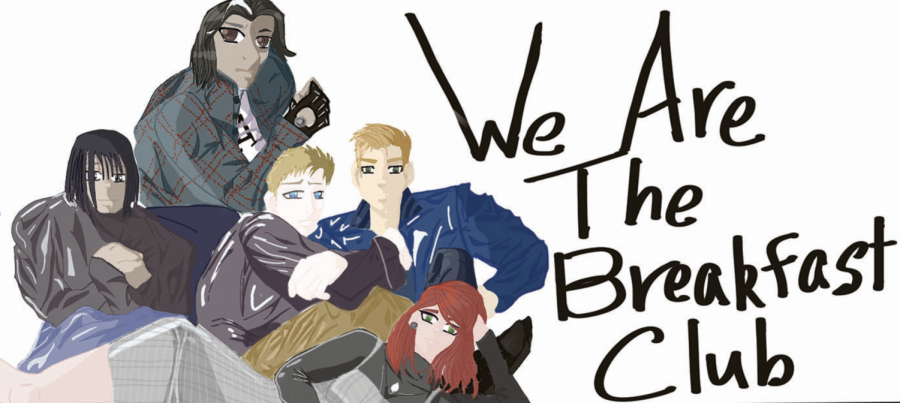We Are The Breakfast Club
The ‘80s classic “The Breakfast Club,” which many have come to love over the years, is a representation of teens’ identities from all generations. The movie displays the struggles and problems that highlight the teenage experience.
January 26, 2021
The beloved coming of age movie, The Breakfast Club, portrays five teens of varied personalities and backgrounds. In the movie, the five teens are stuck in weekly Saturday detentions and end up bonding and becoming friends.
The film portrays the development of the teenage characters and the real-life situations and experiences that they go through in their personal lives: abuse, neglect, drugs and troubled family life. The characters, “The Nerd”, “The Princess”, “The Jock”, “The Criminal” and “The Basket Case” are given stereotypical nicknames to be categorized into their supposed social groups.
Specifically, the teens deal with their parents not caring about them, academic pressure leading to suicidal thoughts, not being able to think for themselves, always doing what others tell them to do and compulsive lying.
During their time in detention, these hidden traumas are revealed and the group grows closer and learns to accept and appreciate each other’s differences.
By the end of the film, the teens learn that they are all each of the stereotypes that they have given to each other.
They are all so much more alike than they thought.
Since the year of its release, The Breakfast Club has grown a cult-like following and has become the blueprint for coming of age films.
With such a varied and wide-reaching group of fans, even teenagers today can relate to the struggles and traumas faced by the characters in the film.
Themes surrounding the teenage experience are relevant throughout the movie and relatable to fans’ real lives even more than 35 years later.
“[The movie shows] different social groups coming together, uniting and becoming friends,” said junior Julianna Seymour.
The movie mainly focuses on teenage experiences and problems, but both adolescents and adults can learn valuable lessons from The Breakfast Club.
One of the main ideas displayed in the film is the insecurity that comes with wanting to belong to a clique and whether or not one makes “the cut” to fit in.
“The key message about teens is that we tend to label ourselves and others and categorize what people we can be friends with and what people we can’t be friends with, all based on personality and social status.
But sometimes, when we’re forced to bond with people outside of our comfort zone, it can end up just fine” said junior Olivia Davenport.
All of the teens in the movie became friends with one another once detention was over, though they wanted nothing to do with one another before.
Despite the labels and groups that they fit into, they were able to find similarities in each other from the problems they were facing and were able to bond through their similar hardships.
Although the film was released 36 years ago in 1985, many similarities can be seen with teens today. Even though we may be living in a different century, the experiences, feelings and problems that teens go through are relatively similar.
Problems that the characters in the film faced are problems that teens are still facing today. “Well, I don’t think there’s much difference in teenagers back then and teenagers now in terms of mannerisms.
The only real difference is the lifestyle as we live in a world revolving around technology now,” Davenport explained, “Keeping that in mind, these teens from the ‘80s could still relate to the social constructs within schools.”
The movie captured the teenage experience in both the ‘80s and the ‘20s and will continue to do so for future generations.


































